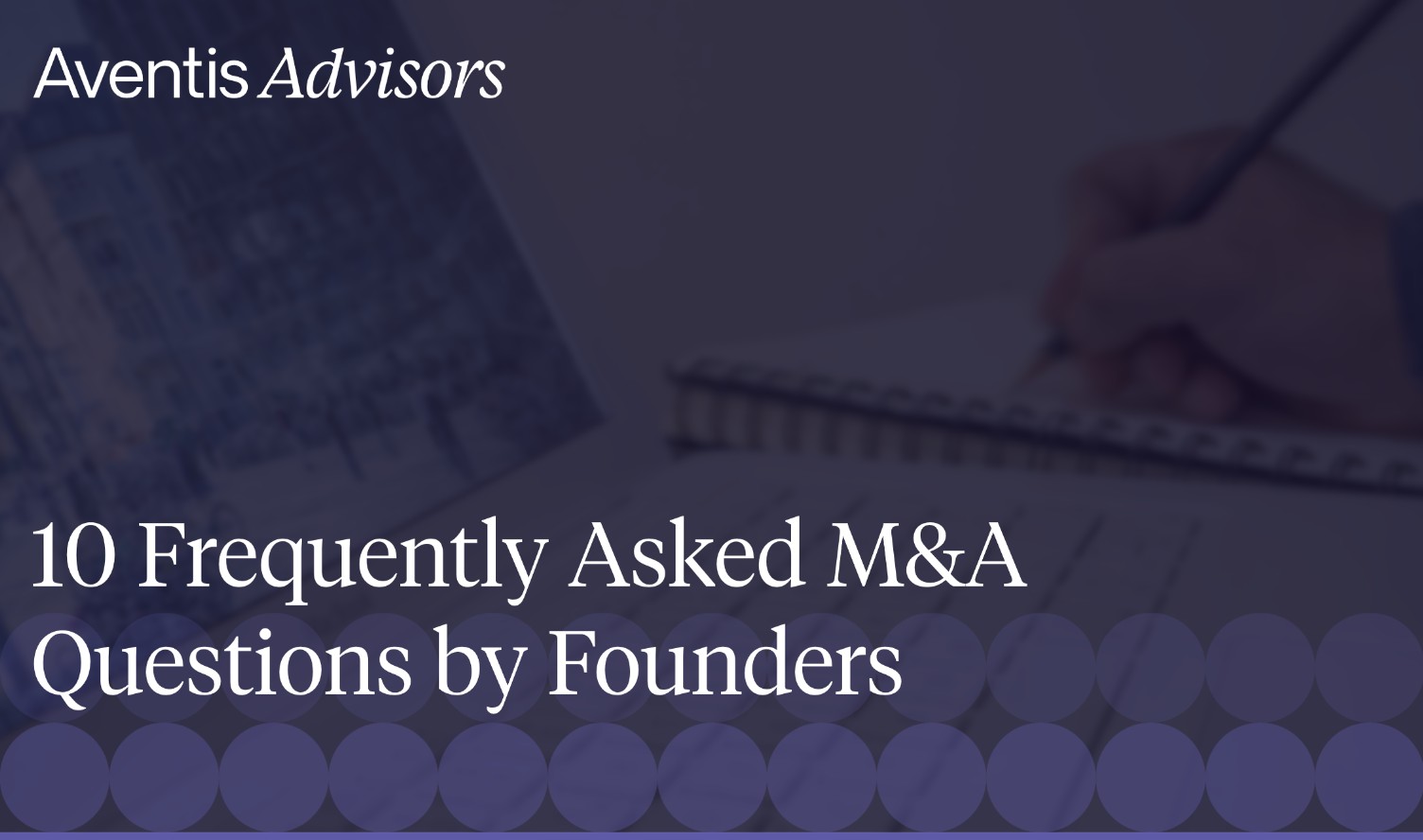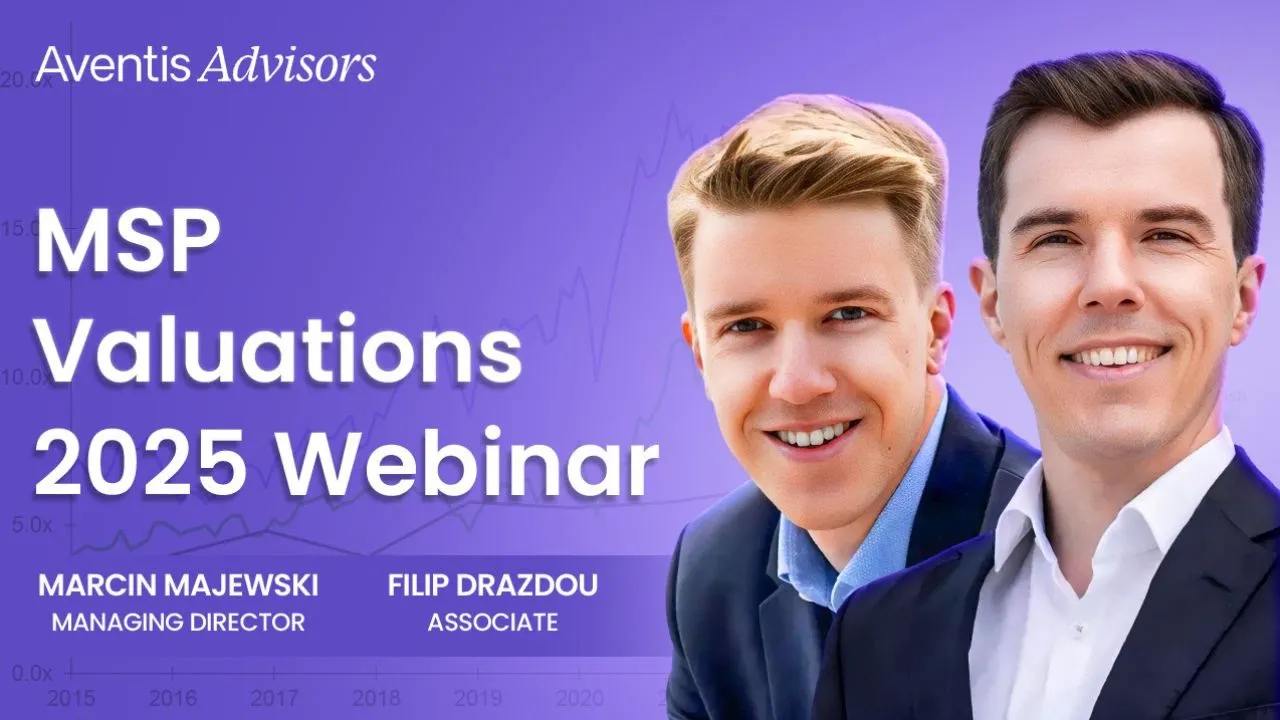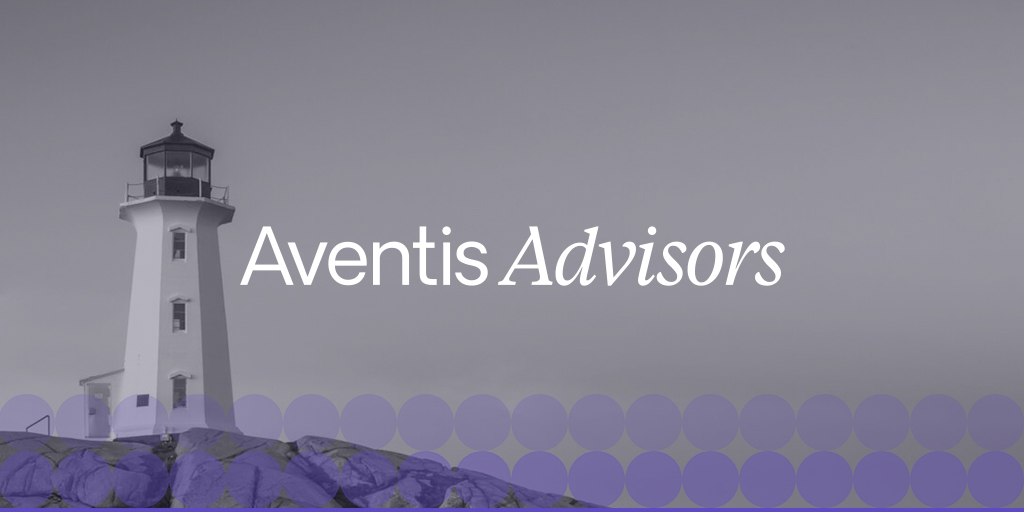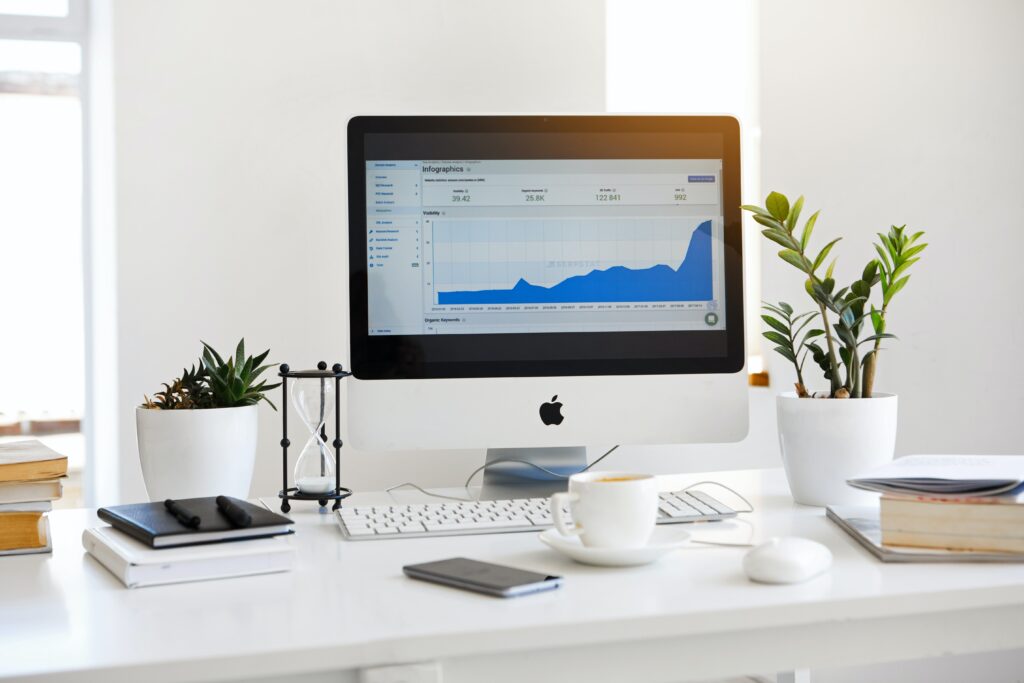SaaS valuation multiples compare a company’s enterprise value to its revenue or ARR. As of September 2025, public SaaS companies are trading at a median EV/Revenue of 6.1x. Private SaaS M&A transactions are closing near the long-term median of 4.7x, with top-performing companies reaching 8.2x or higher.
Larger, faster-growing businesses with strong profitability consistently command higher multiples, while smaller or slower-growing companies tend to trade at lower valuations.
What are SaaS valuation multiples?
SaaS valuation multiples show how much buyers are willing to pay for a software business based on its financial performance and growth potential.
Based on more than 500 private SaaS transactions completed between 2015 and 2025, the median EV/Revenue multiple has been 4.7x. In practical terms, a company generating $10 million in annual revenue would, on average, be valued at approximately $47 million in a sale.
At the higher end of the market, top-performing companies can achieve 8.2x EV/Revenue or more, while smaller or slower-growing businesses typically trade closer to the lower quartile of about 2.5x. These figures provide important context for comparing today’s deal activity with long-term historical trends and highlight how valuations vary across different segments of the market.
For larger, profitable companies, valuations are often measured using EV/EBITDA. In today’s market, the median EV/EBITDA multiple is 22.4x, with top-quartile deals exceeding 46x. Companies in the lower quartile are closer to 12.8x, reflecting higher risk and less stable earnings.
This demonstrates how profitability and operational efficiency directly influence valuations. Businesses with strong margins, efficient operations, and clear growth paths consistently command premium multiples, while those with weaker fundamentals tend to trade at lower levels.
Key SaaS Valuation Multiples
When valuing a SaaS business, different multiples are used depending on the company’s size, growth stage, and profitability. Each provides a slightly different view of performance and risk, so understanding how they work is essential.
ARR Multiple
The ARR multiple compares a company’s enterprise value to its annual recurring revenue. This is a key measure for SaaS companies with subscription-based models because it reflects predictable, ongoing revenue streams. It is especially useful for younger companies that may not yet be profitable but have strong renewal rates and long-term contracts.
EV/Revenue
EV/Revenue compares the enterprise value (EV) of a company to its total revenue over the past 12 months. This is the most widely used multiple for SaaS valuations and is typically the starting point for discussions in M&A deals. It allows buyers to benchmark companies of different sizes and geographies based purely on top-line performance.
EV/EBITDA
EV/EBITDA looks at a company’s value relative to earnings before interest, taxes, depreciation, and amortization. This metric is most relevant for mature SaaS businesses that are generating stable profits. Buyers use it to assess operational efficiency and determine how much cash flow the business can generate for reinvestment or debt servicing.
Rule of 40
The Rule of 40 combines two critical metrics: revenue growth rate and profit margin. Adding these two percentages together gives a single score that reflects both growth and efficiency. A Rule of 40 score above 40% signals a healthy balance between expansion and profitability, which often translates into higher valuation multiples.
Current SaaS Valuation Multiples
Public SaaS Valuation Multiples
Public SaaS valuation multiples have fluctuated significantly over the past decade. From 2015 to 2021, multiples steadily increased as investors chased growth and predictable subscription revenue. During the 2021 peak, top-tier SaaS companies often traded above 15x EV/Revenue.
Since late 2021, the market has corrected sharply. As of September 2025, the median EV/Revenue multiple for large U.S.-listed SaaS companies is 6.1x, down from a peak near 20x. For smaller public firms, the median is slightly lower, reflecting slower growth and thinner margins.
This decline reflects tighter monetary policy, higher interest rates, and a shift in investor focus from pure growth to profitability. Companies with strong growth and a clear path to profitability have been able to maintain higher multiples, while those with weaker fundamentals have seen valuations compress.
The current environment highlights a clear divide. The very best public SaaS companies, such as Adobe, Salesforce, and Intuit, continue to command premium valuations. Mid-tier players, on the other hand, are valued more conservatively. Public multiples also act as a leading indicator for private market transactions, shaping how private SaaS businesses are priced in M&A deals.
Private SaaS Valuation Multiples
While public SaaS companies are valued in open markets, private company valuations are determined through negotiations between buyers and sellers. These private deals usually happen at a discount compared to public multiples, reflecting lower liquidity, limited financial transparency, and smaller scale.
The table below summarizes data from 503 private SaaS transactions between 2015 and 2025. It shows valuation ranges based on revenue and profitability multiples.
| Multiple | Sample (n) | Median deal size | 1st quartile | Median | 3rd Quartile |
|---|---|---|---|---|---|
| EV/Revenue | 503 | $65M | 2.5x | 4.7x | 8.2x |
| EV/EBITDA | 206 | $133M | 12.9x | 22.4x | 46.5x |
Over the past decade, the median EV/Revenue multiple for private SaaS transactions has been 4.7x. This means a company generating $10 million in annual revenue would, on average, be valued at $47 million in a sale.
Top-performing companies can achieve 8.2x or higher, while smaller or slower-growing businesses typically sell near the lower quartile of around 2.5x.
For larger, profitable businesses, valuations are often measured using EV/EBITDA. In today’s market, the median EV/EBITDA multiple is 22.4x, with top-quartile deals exceeding 33x. Companies in the lower quartile are closer to 12.8x, reflecting higher risk and less stable earnings.
As of September 2025, private SaaS companies are trading at a median of 5.7x EV/Revenue. This increase is primarily due to a higher share of large transactions, with over 60% of 2025 deals valued above $50M, which typically command higher multiples. It does not necessarily indicate a full market rebound, as buyers remain selective and focused on efficiency and profitability.
The public-to-private valuation discount generally ranges from 20% to 30%, depending on company quality and deal size. This discount compensates buyers for added risks such as lower liquidity, less rigorous reporting standards, and reduced visibility into future growth.
For example, if a comparable public company trades at 6.0x EV/Revenue, a similar private company would typically sell for 4.5x to 4.8x.
Factors Influencing SaaS Valuation Multiples
Valuation multiples can vary dramatically even among companies with similar revenue levels. Buyers look beyond the top line to assess risk, stability, and potential upside. Below are the main factors that determine whether a SaaS business will trade at the lower or upper end of the valuation spectrum.
Growth Rate
High revenue growth is one of the strongest drivers of premium valuations. Companies expanding quickly signal strong market demand and a scalable business model. Buyers are more willing to pay higher multiples for growth that is consistent, predictable, and achieved with efficient use of capital. Slowing growth or volatile results usually push valuations lower.
Churn and Retention
Churn directly affects the stability and predictability of revenue. SaaS companies with low churn and high net revenue retention (NRR) are more attractive to buyers. High retention shows that customers see long-term value in the product, making future revenues easier to forecast. Conversely, high churn rates signal risk and can quickly reduce the multiple buyers are willing to pay.
Customer Concentration
The makeup of a company’s customer base is another critical factor. Heavy reliance on just a few large customers increases risk. If one leaves, revenue could drop significantly, impacting valuation. A broad and diversified customer base reduces this risk and supports higher multiples.
Target Group: B2B vs. B2C
Whether a company sells to businesses (B2B) or directly to consumers (B2C) can influence its valuation.
- B2B SaaS often commands higher multiples because contracts tend to be longer, retention rates higher, and revenues more predictable.
- B2C SaaS, especially when serving a broad audience, can face more volatility and higher churn. However, B2C companies with strong brand recognition and massive user bases can still achieve premium pricing when their growth is exceptional.
Sector and Specialization
The market segment a SaaS company serves plays a big role in valuation.
- SaaS products built for high-demand sectors like cybersecurity, AI-enabled tools, and compliance software often trade at a premium due to strong, growing demand.
- Vertical SaaS solutions tailored to a specific industry (for example, healthcare or logistics) can also achieve strong multiples if they show deep product-market fit and limited competition.
- In contrast, general-purpose SaaS offerings face more competition and pricing pressure, which can limit valuation upside.
Market Conditions and Timing
Even the best company is affected by external factors. Broader economic trends, interest rates, and public market performance shape buyer sentiment and valuation ranges. As public multiples expand, private deals tend to follow. If public markets pull back, private valuations typically adjust downward, sometimes with a delay.
When should I consider selling my SaaS business?
Market
The SaaS M&A market has cooled significantly since its 2021 peak, when public companies were often valued above 15x EV/Revenue. As of September 2025, median public multiples are around 6.1x. Private transactions are closing near 5.7x this year, which is slightly above the long-term 4.7x median because a larger share of deals involve targets valued at over $50M.
For founders, buyers are still active but more selective. High-performing companies with strong growth, efficient operations, and solid Rule of 40 scores can still achieve premium valuations, while others face tougher negotiations and lower offers.
The biggest challenge is meeting buyer expectations. Investors now prioritize profitability, retention (NRR), and scalability with clear cash conversion. Founders need to prepare thoroughly, ensure metrics are accurate, and present a compelling story that demonstrates resilience and a clear path forward.
Growth rate
Many smaller and mid-sized SaaS companies are currently facing a challenging growth environment. After years of rapid expansion, growth rates have slowed, while improvements in profitability have been limited. This is creating difficult decisions for founders, especially as investors now demand both growth and a clear path to earnings.
For many founders, this slowdown becomes a turning point. Without access to additional capital or a scalable sales engine, it can be difficult to reignite growth while also improving margins. This often leads them to consider selling to a larger strategic investor who can bring resources, distribution networks, and operational expertise to accelerate the business.
Key trends we see in the current market include:
- Slowing growth rates as competition intensifies and customer acquisition costs rise.
- Flat or declining profitability, with many companies struggling to balance investments in growth with operational efficiency.
- Strategic buyers stepping in to acquire smaller platforms and integrate them into a broader product suite.
For founders, this environment creates both pressure and opportunity. While scaling independently has become harder, selling to a strategic partner can unlock new growth potential, provide financial security, and allow the business to reach a level it might not achieve alone.
Personal journey
For many founders, deciding to sell their SaaS company is more than a financial transaction. It represents the culmination of years spent building a product, growing a team, and navigating countless challenges. The company often becomes a core part of the founder’s identity, which makes the decision to sell both exciting and deeply personal.
As market conditions shift, founders are faced with tough choices about the future of their business. Slower growth, rising competition, and higher expectations from investors can create pressures that are difficult to manage alone. Continuing to scale independently may require resources or expertise that the company does not have. In these situations, selling to a larger strategic buyer can be the right path, providing access to capital, technology, and networks that allow the business to grow beyond what would be possible on its own.
The sale of a company also marks a major personal milestone. It can provide financial security and open the door to new opportunities, whether that means launching another venture, taking on a leadership role in a larger organization, or taking a step back to reflect and recharge. While the process can be complex and emotional, careful preparation and the right guidance help founders achieve an outcome that reflects both their effort and the future potential of the business they have built.
Why you need a SaaS M&A advisor
Monitoring SaaS company valuations offers important insights into market trends and aids in timing your exit strategy. However, each SaaS business is unique, much like every founder’s journey. Therefore, it’s essential to consult with experts in the SaaS M&A landscape, particularly advisors who specialize in the SaaS sector and can understand your unique circumstances.
SaaS M&A advisors understand how to navigate market dynamics, valuations, and coordinate all the necessary workstreams. While you concentrate on running your business, SaaS M&A advisors work diligently to ensure that no detail is overlooked and advocate for the best possible deal. Their success is directly linked to yours through a success fee structure, and their influence on the final sale price can therefore be substantial.
About Aventis Advisors
Aventis Advisors is an M&A advisor for SaaS companies. We believe the world would be better off with fewer (but better quality) M&A deals done at the right moment for the company and its owners. Our goal is to provide honest, insight-driven advice, clearly laying out all the options for our clients – including the one to keep the status quo.
Get in touch with us to discuss how much your business could be worth and how the process looks.




